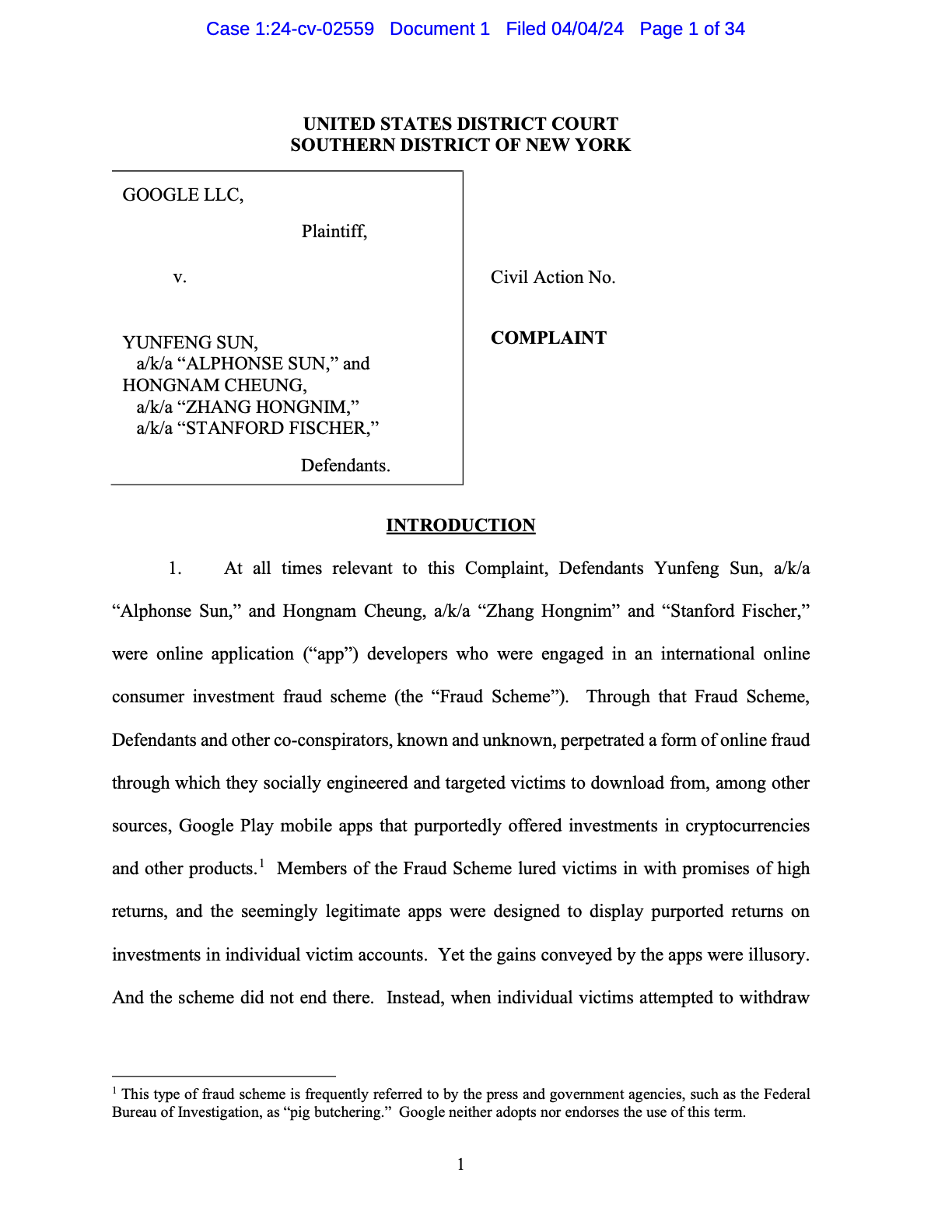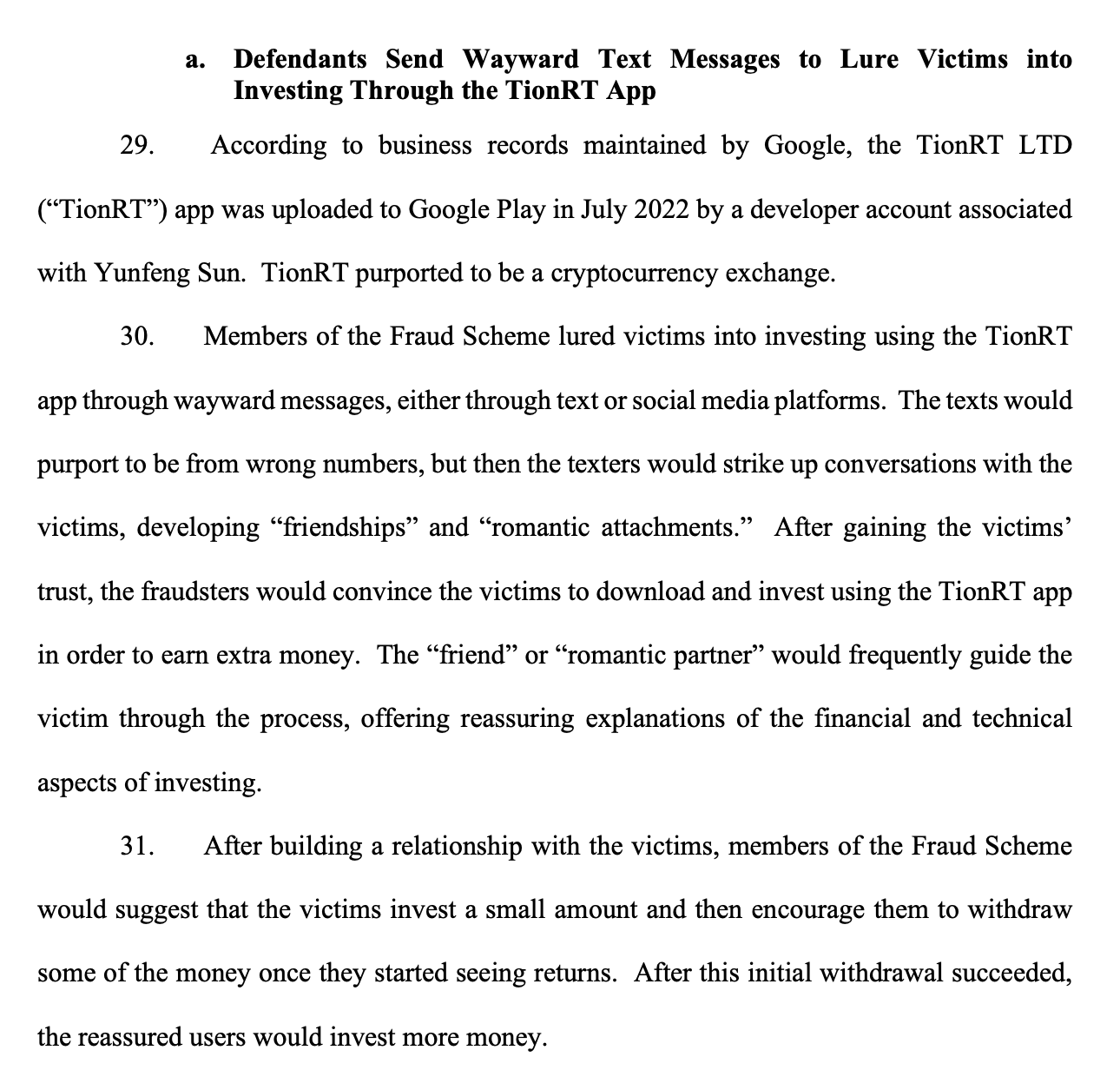Google has filed a lawsuit against two scammers who they allege have submitted at least 87 fraudulent cryptocurrency and investment platform apps to the Google Play Store.
According to Google, at least 100,000 people have downloaded the apps, and some have suffered financial losses as a result.
Google alleges the scammers used romance scam techniques, among others, to try to persuade victims to download the apps.
The case is Google LLC v. Sun.
